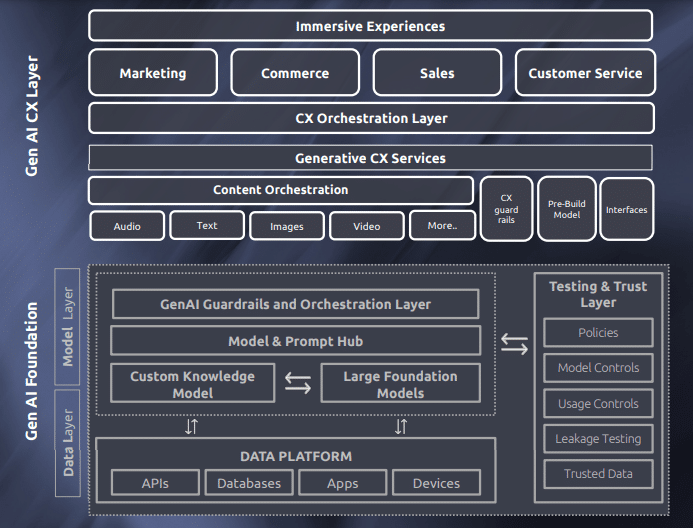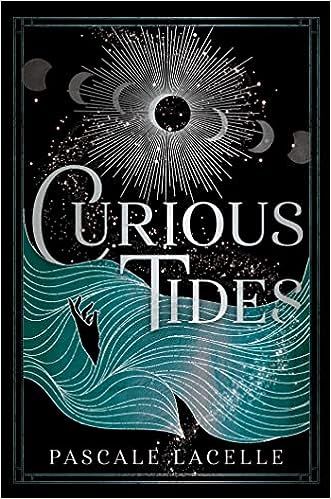Marketers now have a blueprint to adopt new AI technology thanks to Shawn Goodin, principal martech strategist at technology services and digital transformation leader Capgemini. Goodin unveiled the marketing AI blueprint in a keynote that kicked off Day 2 of The MarTech Conference.
The blueprint helps marketers map where tools fit in their organization’s stack. And because generative AI technology is rapidly evolving, it provides important steps that help teams decide, adopt and launch these tools as new ones become available.
Marketers should be excited about the upside of these new technologies, while also remaining cautious about adopting the right technologies for their specific businesses, Goodin said.
“The evolution of AI and the incredible breakthroughs that we have seen in the last year are without a doubt the most transformational and disruptive technological — but more importantly societal — impacts of our lifetime,” he said.
Mapping generative AI architecture
Here’s a look at where generative AI tools fit within the technology of your marketing organization.

Foundation layer. This layer is made up of the organization’s data, AI data models and testing and “trust” layer.
“The key point here is that you’re not building your own models,” said Goodin. “Not that you can’t do that, but when you think about the cost and the time that OpenAI spent [to create ChatGPT], the infrastructure to build large language models is not something that many organizations [can achieve on their own].”
Instead, organizations can integrate large language models, diffusion models that help create images, and other models that create audio and video, into their own organization’s data and model layer.
Organizations then build brand-specific guardrails layered on top of the AI data models to make sure that the content and experiences made from these models conform to brand guidelines, tone and company policies..
“Now you have the power of the entire industry at your fingertips in a safe and scalable way,” Goodin said.
CX layer. It’s in the customer experience layer where marketers are uniquely positioned to help integrate generative AI technology for use by other teams in the organization.
“The CX layer sits on top of that generative AI foundation layer to allow you to connect the text, the image, the video, the audio into generated experiences — while always keeping those brand guardrails, first and foremost,” Goodin said. “This can then be plugged into your organization across marketing, sales, commerce and customer service.”
“The more we can make this a unified experience, the better it is for our customers,” he added.
Adoption framework for deploying generative AI technology
Once marketers have a better idea of where generative AI tools fit within their organization’s architecture, they can get to the business of reviewing, adopting and deploying these tools.

There are five main steps for adoption laid out in the marketing AI blueprint.
- Identify opportunity and prioritize: Some early opportunities will be low-risk and quick to activate (“low-hanging fruit”).
- Architecture blueprint: What areas in the stack this tool will affect. The architecture doesn’t have to be completely mapped out at the beginning of the tool’s deployment.
- Align opportunities: Develop business use cases for the technology.
- Pilot build: Use the technology in limited cases where business value can be proven.
- Roll out and scale the proven business use cases.
“This becomes a rinse-and-repeat,” Goodin said. “You continue to go back to those opportunities and look at the list [of technologies you want to adopt]. You’ve now got a way to tie your business strategy to what is capable in the technology. You then map those into bite-size projects, you pilot them and then you roll them out.”
Go here to register for free and see the full keynote presentation.
function getCookie(cname) {
let name = cname + “=”;
let decodedCookie = decodeURIComponent(document.cookie);
let ca = decodedCookie.split(‘;’);
for(let i = 0; i <ca.length; i++) {
let c = ca[i];
while (c.charAt(0) == ' ') {
c = c.substring(1);
}
if (c.indexOf(name) == 0) {
return c.substring(name.length, c.length);
}
}
return "";
}
document.getElementById('munchkinCookieInline').value = getCookie('_mkto_trk');
The post Marketing AI blueprint unveiled at The MarTech Conference appeared first on MarTech.






































































